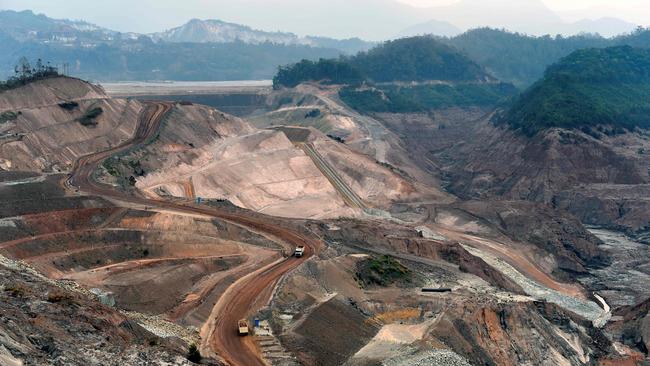Vale exec says Samarco can be returned to former greatness under control of its lenders
Veteran Vale executive Tito Martins says Samarco can again become a benchmark in global mining, but only if the Brazilian courts throw BHP and Vale out of the operation.

The former Vale executive tapped to run Samarco if its lenders wrest control of the giant iron ore mine from BHP and Vale says he wants to return the operation to its former standing as a benchmark other miners aspire to reach.
Lenders that claim to represent at least two-thirds of Samarco’s $US5bn in external debt voted against the company’s most recent debt restructuring proposal in late April, and this week submitted an alternative recapitalisation plan to the Brazilian courts.
BHP and Vale are understood to be considering the lenders’ plan, and are believed to have already expressed concerns that the proposal maximises returns to unsecured creditors at the expense of other groups – including both shareholders.
But the self-styled Ad Hoc Group of Creditors (AHGC) – which includes asset managers and distressed debt investors York, Oaktree Ashmore, Canyon, Maple Rock and Solus – have in turn argued the restructuring proposal put forward by Samarco heavily favours its two shareholders – BHP and Vale – at the expense of everyone else.
The AHGC’s proposal would see Samarco’s debts be refinanced into 10-year notes – a far quicker payback for lenders than the plan back by BHP and Vale, in which it would take until as late as 2041 for lenders to be repaid only a quarter of the money they are currently owed.
They want the Brazilian courts to hand control of Samarco to its lenders, and plan to ramp up Samarco’s operations far faster than BHP and Vale, arguing that external stakeholders will get a better return than under Samarco’s own plan.
To achieve this the AHGC have tapped former Vale chief financial officer Tito Martins to run Samarco if their bid is successful.
Speaking to The Australian this week, Mr Martins said his long history with the iron ore mine was a major factor in his decision to join the audacious bid by Samarco’s lenders to seize control of the company.
“I was involved in the acquisition of Samarco in the late 1990s, when Vale acquired Samitri – and then Samarco who was its subsidiary. I was on the board of Samarco for three years,” he said.
“Samarco was a reference. Trust me, give me the name of the three best mining companies in the world and Samarco would be in that list for most of the time.”
That reputation came crashing down in 2015, when a dam failure sent a tidal wave of mine tailings sweeping downstream, killing 19 people and doing untold damage to the environment.
Samarco only returned to production in late 2020 and its planned ramp up is staggered a too slow for the lender group. Samarco is expected to produce 4 million tonnes of iron ore in the 12 months to the end of June – well below the 29 million tonnes it produced in the 2015 financial year, and is not yet expected to reach its nameplate output rates until 2030.
“We believe the company can do it earlier. We believe you should be able to reach full capacity by 2026,” he said.
At the centre of his operational plan, Mr Martin said, is the accelerated adoption of a new way to dispose of mine waste – by dry-stacking tailings, rather than building a new dam, which he says is the centrepiece of BHP and Vale’s preferred option of a slower ramp-up.
BHP and Vale are likely to challenge that view, and argue Samarco’s obligations to repay its lenders should not trump the company’s obligation to ensure its ramp-up is both safe and sustainable.
But Mr Martins told The Australian Vale was already moving to dry-stacking of mine waste at its other Brazilian mines, and Samarco should follow suit.
“We believe that they should assume at the very beginning that they should change all their systems towards a dry sacking process,” he said.
“Our business plan for the new Samarco contemplates the fact that you would provide an additional investment in the company for the next two to three years in order to advance production, and reach full production at least two to three years earlier than what they are saying.”


To join the conversation, please log in. Don't have an account? Register
Join the conversation, you are commenting as Logout